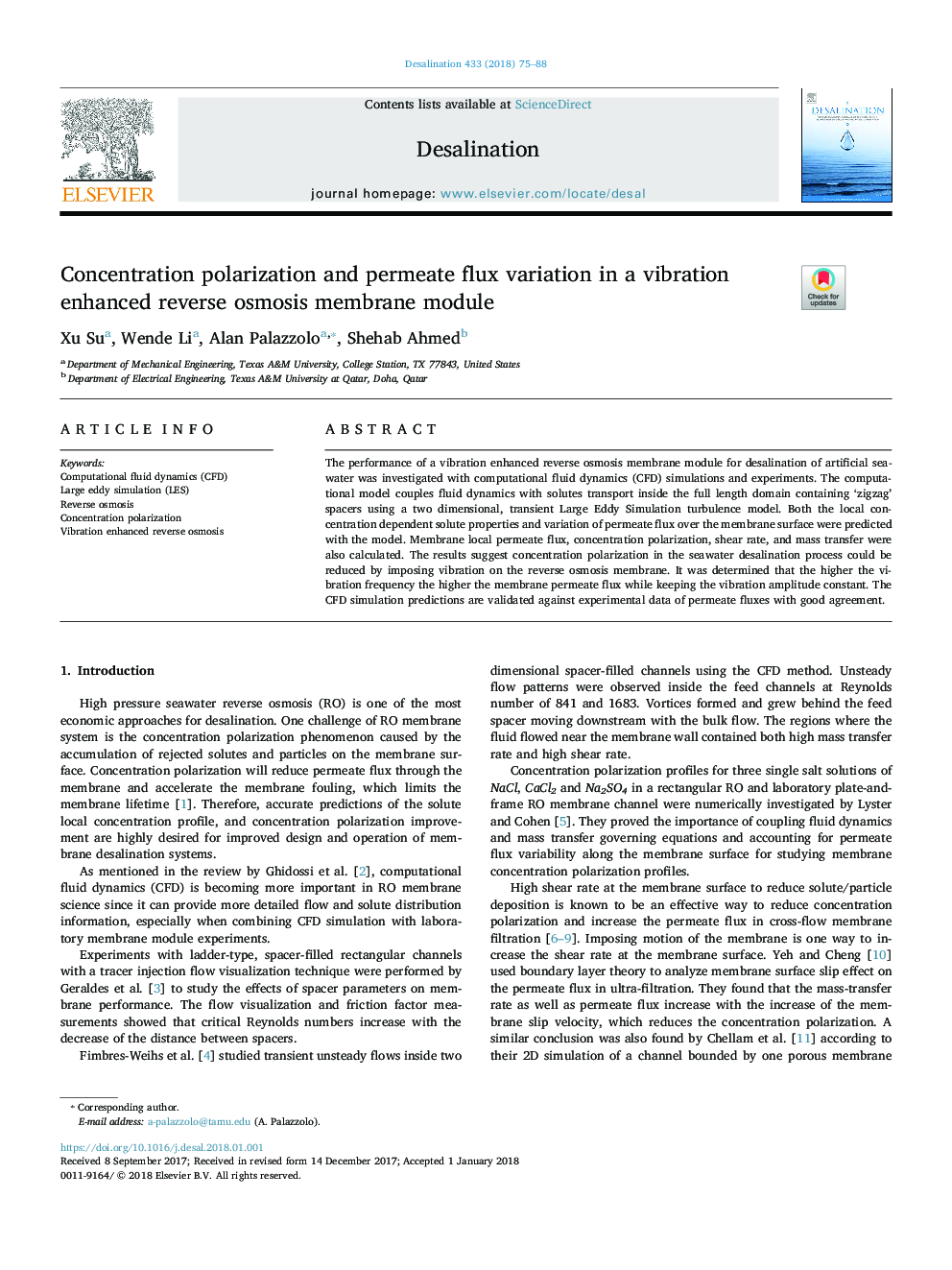| Article ID | Journal | Published Year | Pages | File Type |
|---|---|---|---|---|
| 7007974 | Desalination | 2018 | 14 Pages |
Abstract
The performance of a vibration enhanced reverse osmosis membrane module for desalination of artificial seawater was investigated with computational fluid dynamics (CFD) simulations and experiments. The computational model couples fluid dynamics with solutes transport inside the full length domain containing 'zigzag' spacers using a two dimensional, transient Large Eddy Simulation turbulence model. Both the local concentration dependent solute properties and variation of permeate flux over the membrane surface were predicted with the model. Membrane local permeate flux, concentration polarization, shear rate, and mass transfer were also calculated. The results suggest concentration polarization in the seawater desalination process could be reduced by imposing vibration on the reverse osmosis membrane. It was determined that the higher the vibration frequency the higher the membrane permeate flux while keeping the vibration amplitude constant. The CFD simulation predictions are validated against experimental data of permeate fluxes with good agreement.
Keywords
Related Topics
Physical Sciences and Engineering
Chemical Engineering
Filtration and Separation
Authors
Xu Su, Wende Li, Alan Palazzolo, Shehab Ahmed,
